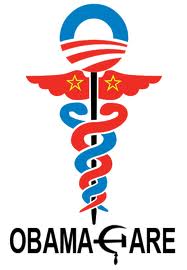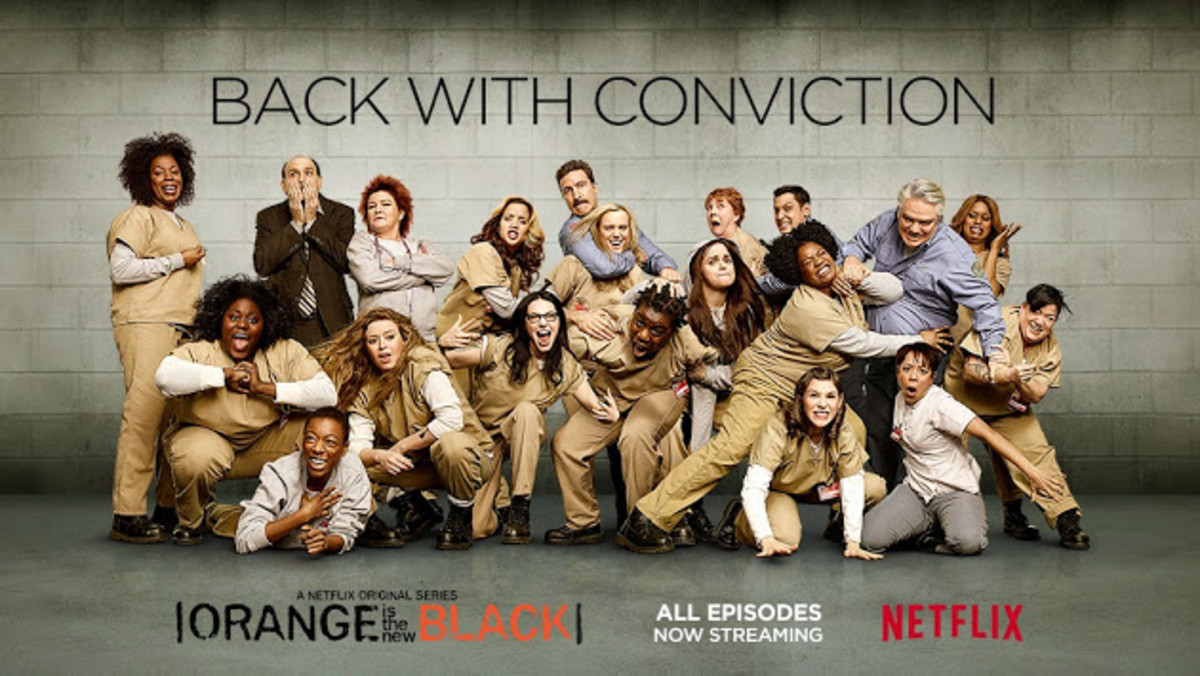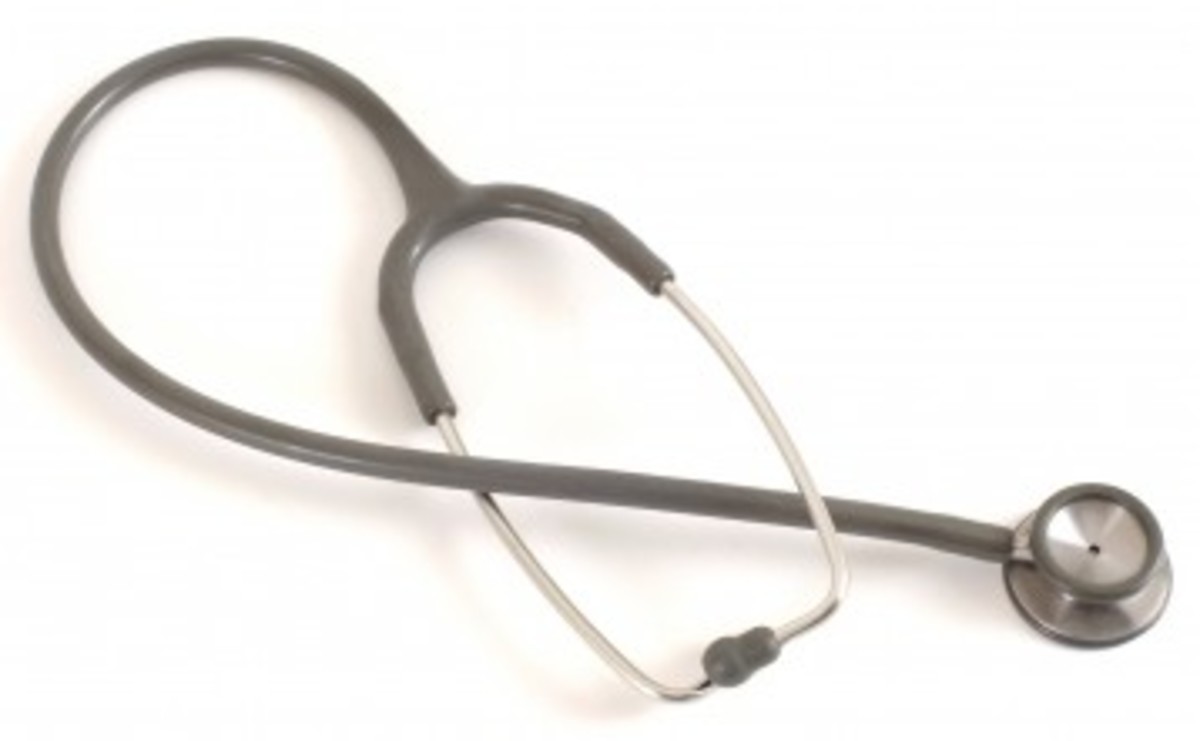ACA - Obamacare Is Working For Millions Despite Donald Trump and the Republican's Best Attempt to Kill It.
January 16, 2019 Update
Donald Trump and the Republicans tried to carry out their threat to kill insurance for millions of Americans - they failed. Sens McCain, Collins, and Murkowski joined with the Democrats to save the Affordable Care Act. Later, the Republicans did get a modicum of revenge by adding a provision in their tax bill that stopped the IRS from collecting the penalty for not having insurance.
After watching insurers leave the market in 2017 and 2018, surprisingly, they are coming back. The price increases generated by all of the uncertainty in the market place were finally sufficient to allow profitable operations. So, in 2019, insurers began coming back - and with lower prices.
While, because of actions by the Trump administration, applications did fall in 2018 and more so in the 2019 sign-ups, they did not collapse as was predicted. Bottom line, millions of people are insured that otherwise wouldn't be and insurers are now making a profit.
NOVEMBER 8, 2013
EUREKA! I GOT INTO THE OBAMACARE WEBSITE! Since Oct 1, 2013, I kept trying to find out the various prices for the various exchange plans available. After about a week, I was able to get to the log-in sign-up screen. It took two more weeks to get an actual user name and password. At about 8:50 PM, Nov 8, 2013, I finally succeeded in breaking through the walls and apply for insurance so that I could find the prices, yeah!
WHAT ARE 2015 RATE CHANGES LOOKING LIKE?
These are close to the final numbers, or in some cases are the final numbers. Notice two things; 1) the more insurers there are, the less increase in premiums there (in a few cases there is a decrease in premiums) showing competition is working; as envisioned and 2) virtually all states have some plans who lowered their rates.
ALABAMA: Alabama saw only an average 3% increase in premiums for 2015. That puts the average Silver Plan premium for a single person at $269/mo, before subsidies. For comparison, the Platinum Plan, which often has no deductibles, has an average premium of $317/mo, before subsidies.
ALASKA: At an average rate of $583/mo, before subsidies, for the Silver Plan, Alaska comes in worst out of the 50 states. The high rate was the result of the worst average increase in the Nation, when compared to 2014, of a whopping 31%! Fortunately for Alaskans, 88% of them will qualify for some sort of subsidy where, in 2014, 61% paid $90/mo or less.
ARIZONA: Average Silver Plan Premium to be $313; Range Change from -25% to +24%; Average change: 4.5%; Number of Insurers: 16; Number of new Plans: 9
JANUARY 22, 2014
I JUST COMPILED THE LATEST INSURANCE EXCHANGE statistics I could locate. Most were current as of Dec 28, 2013, but a few were reports from the first week of Jan 2014. Enrollment has now climbed above the 2 million mark. The ratio, as would be expected, of healthy to unhealthy is not where it needs to be for the program to be a success. I don't expect to be until after tax time when the penalties kick in.
MARCH 11, 2014
THERE ARE JUST 2O DAYS LEFT TO SIGN UP FOR OBAMACARE or face penalties next April 15, 2015. To-date, about 4.3 million people have signed up through the insurance exchanges
MARCH 18, 2014
THE WHITE HOUSE JUST REPORTED the number of sign-ups for Obamacare just passed the 5 million mark. Millions more have signed for expanded Medicaid in those states who saw fit to help their citizens. Also, a significant number of signed up for private insurance but not through the exchanges; these people are generally the ones who don't qualify for subsidies and can find better deals outside the insurance exchanges. Six million now appears a bit more doable.
We are one step closer to a much healthier America.
Continuing
ARKANSAS: Average Silver Plan Premium to be $429; Range Change from -?% to ?%; Average change: -2.0% (includes private option for Medicaid-eligible individuals); Number of Insurers: 4; Number of new Plans: 0
CALIFORNIA: Average Silver Plan Premium to be $388; Range Change from -3% to +28%; Average change: 6.3%; Number of Insurers: 15; Number of new Plans: 4
COLORADO: Average Silver Plan Premium to be $412; Range Change from -22% to +35%; Average change: 2%; Number of Insurers: 15; Number of new Plans: 5
CONNECTICUT: Average Silver Plan Premium to be $393; Range Change from -22% to +9%; Average change: -1.9%; Number of Insurers: 9; Number of new Plans: 4
DELAWARE: Average Silver Plan Premium to be $400; Range Change from -3% to +4%; Average change: 0.7%; Number of Insurers: 2; Number of new Plans: 1
FLORIDA: Average Silver Plan Premium to be $391; Range Change from -12% to +20%; Average change: 5.3%; Number of Insurers: 17; Number of new Plans: 6
GEORGIA: Average Silver Plan Premium to be $402; Range Change from -7% to +18%; Average change: 3.7%; Number of Insurers: 9; Number of new Plans: 5
ILLINOIS: Two new insurers joined the other six to offer a total of 306 individual policy choices and 198 for small groups; that is up from 120 and 45, respectively. No word on rates yet, but expected to have some decreases with the extra competition.
INDIANA: Average Silver Plan Premium to be $457; Range Change from -8% to +24%; Average change: 9.7%; Number of Insurers: 13; Number of new Plans: 9
IOWA: Average Silver Plan Premium to be $357; Range Change from 0% to +19%; Average change: 11%; Number of Insurers: 7; Number of new Plans: 0
KANSAS: Average Silver Plan Premium to be $393; Range Change from +11% to +20%; Average change: 15.5%; Number of Insurers: 6; Number of new Plans: 2
KENTUCKY: Average Silver Plan Premium to be $?; Range Change from -4% to +15%; Average change: 4.6%; Number of Insurers: 9; Number of new Plans: 5
OHIO: Average Silver Plan Premium to be $373; Range Change from ?% to ?%; Average change: 12.1%; Number of Insurers: 6; Number of new Plans: 5
OKLAHOMA: Average Silver Plan Premium to be $357; Range Change from -9% to +20%; Average change: 6.7%; Number of Insurers: 10; Number of new Plans: 1
MAINE: Average Silver Plan Premium to be $408; Range Change from -1% to +2%; Average change: 0.7%; Number of Insurers: 4; Number of new Plans: 1
MARYLAND: Average Silver Plan Premium to be $298; Range Change from -14% to +16%; Average change: 5.9%; Number of Insurers: 8; Number of new Plans: 2
APRIL 1, 2014
NO MORE SIGN UPS TO OBAMACARE ALLOWED until November 2014. Granted, those that got their foot in the door by midnight Eastern Daylight Time, March 31, 2014 can still complete their application and pay up. It is clear that the lower goal of 6 million sign-ups was blasted through as was the original estimate of 7 million. Given the applications from the state exchanges and off-exchange insurers, the probability of exceeding the CBO threshold of 7,000,000 enrollments being met is very high.
The next critical question is, did enough young people sign up? It is these people who insurers are counting on to keep costs down as they service the more sick class of older adults. From the series of conflicting reports and propaganda let out from both sides, it does seem more probable than not that the mix is near what is needed. My main barometer is the lack of worry coming from the insurers themselves.
It is that same lack of public jitters from the insurers that make me think the program is working as designed, even though not in as automated way as they had hoped given the fact the back-end computer systems are still being worked on.
APRIL 18, 2014
PRESIDENT OBAMA ANNOUNCED THAT FEDERAL EXCHANGE SIGN-UPS NOW EXCEED 8,000,000; and the number is expected to grow a bit more. The CBO, however, expects that when the dust settles in a few months, there will be around 6,000,000 people paid into the federal exchange system. Why the drop? Because the CBO expects some not to pay, maybe 15%, let coverage lapse or cycle out of the system by obtaining insurance from another source.
The 8,000,000 number is not the only good news for Obama and the Democrats, there is also:
- The CBO just reduced its estimate of the overall cost of Obamacare by $104 B between 2015 - 2024
- Around 35% of enrollees in the federal exchanges were below the age of 35; the White House originally hoped for 40%, but it is much better than the 25% that was being seen in January and is in line with what Massachusetts experienced in their first year.
- The ACA is still expected, by the CBO, to lower the deficit.
- Many more insurers are coming off the sidelines and will participate next year
- The Society of Actuaries predicts premium increases to fall, on average, between 6 - 8.5% rather than the normal 7 - 10%.
- Enrollment in state and off-exchanges plus under 26ers on parent's plans should total another 5,000,000 enrollees
- Enrollment in Medicaid increased by 3,000,000
- Gallup estimated that the rate of uninsured dropped from 18% in the 4th quarter of 2013 to 15.6% by March 31, 2014; it declined even further in those states who participated in the expanded Medicaid program.
Continue
MICHIGAN: Average Silver Plan Premium to be $360; Range Change from -22% to +18%; Average change: 3.6%; Number of Insurers: 19; Number of new Plans: 10
MINNESOTA: Average Silver Plan Premium to be $320; Range Change from -9% to +17%; Average change: 5.7%; Number of Insurers: 5; Number of new Plans: 1
MISSISSIPPI: Average Silver Plan Premium to be $?; Range Change from -25% to +7%; Average change: -9.3%; Number of Insurers: 2; Number of new Plans: 0
NEBRASKA: Average Silver Plan Premium to be $?; Range Change from -3% to +20%; Average change: 9%; Number of Insurers: 4; Number of new Plans: 1
NEVADA: Average Silver Plan Premium to be $?; Range Change from -7% to +24%; Average change: 4.9%; Number of Insurers: 13; Number of new Plans: 1
NEW HAMPSHIRE: The two providers have proposed changes between a 9.8% average increase to an 15.4% increase, the actual increase depending on the plan. [ed: interesting difference between Maine and New Hampshire]
NEW MEXICO: Average Silver Plan Premium to be $?; Range Change from -4% to +9%; Average change: 1.4%; Number of Insurers: 6; Number of new Plans: 1
NEW YORK: New York appears to be an outlier for 2015 so far with only rate increases coming down the pike. The average increase requested is 13% with a new entrant wanting a 28% increase.over 2014 rates.
They didn't get what they wanted, for average Silver Plan Premium is to be $?; Range Change from -15% to +13%; Average change: 0.6%; Number of Insurers: 21; Number of new Plans: 4
NORTH CAROLINA: Average Silver Plan Premium to be $384; Range Change from +9% to +18%; Average change: 11.8%; Number of Insurers: 8; Number of new Plans: 3
OREGON: Average Silver Plan Premium to be $250; Range Change from -20% to +10%; Average change: -2.5%; Number of Insurers: 13; Number of new Plans: 0
PENNSYLVANIA: Average Silver Plan Premium to be $478; Range Change from -6% to +20%; Average change: 10.4%; Number of Insurers: 13; Number of new Plans: 8
RHODE ISLAND: Average Silver Plan Premium to be $305; Range Change from -5% to +5%; Average change: -1.4%; Number of Insurers: 3; Number of new Plans: 1
SOUTH CAROLINA: Average Silver Plan Premium to be $?; Range Change from +10% to +17%; Average change: 13.4%; Number of Insurers: 10; Number of new Plans: 2
SOUTH DAKOTA: Average Silver Plan Premium to be $460; Range Change from 0% to +3%; Average change: 2%; Number of Insurers: 5; Number of new Plans: 2
TENNESSEE: Average Silver Plan Premium to be $360; Range Change from -9% to +17%; Average change: 13.8%; Number of Insurers: 5; Number of new Plans: 1
UTAH: Average Silver Plan Premium to be $?; Range Change from +8% to +19%; Average change: 7.6%; Number of Insurers: 8; Number of new Plans: 3
VERMONT: Average Silver Plan Premium to be $414; Range Change from +8% to +11%; Average change: 9.3%; Number of Insurers: 2; Number of new Plans: 0
VIRGINIA: Average Silver Plan Premium to be $354; Range Change from 2% to +18%; Average change: 10.2%; Number of Insurers: 14; Number of new Plans: 6
WASHINGTON: Average Silver Plan Premium to be $364; Range Change from -3% to +26%; Average change: 5.1%; Number of Insurers: 14; Number of new Plans: 4
WASHINGTON D.C.: Average Silver Plan Premium to be $?; Range Change from -6% to +8%; Average change: 2.3%; Number of Insurers: 4; Number of new Plans: 0
WEST VIRGINIA: Average Silver Plan Premium to be $417; Range Change from 0% to +10%; Average change: 6.7%; Number of Insurers: 7; Number of new Plans: 2
WISCONSIN: Average Silver Plan Premium to be $465; Range Change from -17% to +24%; Average change: 3.8%; Number of Insurers: 17; Number of new Plans: 3
APRIL 24, 2014
THIS SECTION WILL DISCUSS EXCHANGE INSURANCE COSTS. For starters, let me give you a baseline for comparison, which is my company's insurance. We are a small business with a little less than 40 employees, so we don't have to provide insurance; but, we always have, even when we only had three employees. We currently have what would be equivalent to the exchange's 90/10 Platinum Plan.
Our plan, from United Health, costs the company $324 per employee per month and the employee $81/month. We do not cover spouses or family, so those costs the employee between $340 and $440 for a spouse or child; or $761 more per month for the rest of the family, should they choose to purchase them. It provides the following:
Deductible - $250/$750
Co-Pay after deductible - 90% - 10% (70% out of network)
Primary - $25, Specialty - $50
Max Out of Pocket - $2,500/$5,000
The Exchange Plan commonly used for comparison purposes is the Silver Plan, this is the one for which typical premiums are available. Its benefits are:
Deductible - $2,907/$6,078
Co-Pay after deductible - 70%- 30%
Primary - $32, Speciality - $56
Max Out-of-Pocket - $5,730/$11,495
The table below presents typical premiums paid for single and family coverage by state. The variability is caused by several factors but one primary one is how many companies are competing in a given locality; in some places it is as low as one. It appears that will improve next year indicating rates may go down in many areas of the country.
More Headlines
6/5/2014: Gallup Survey (Apr 1, 2014 - May 31, 2014) -
- Lowest uninsured rate across all (9 out of 10) subgroups since poll started in 2008!
- Rates among blacks fell by percentage points and Hispanics by 5.6 points.
- Rates dropped 6 points in households with incomes less than $36,000
6/18/2014:USA Today (Jayne O'Donnell and Kaitlyn Krasselt) -
- Nearly 70% of consumers who bought subsidized health insurance on the federal exchange for 2014 paid $100 or less in monthly premiums,[ed: so much for unaffordability]
- ... rate increases that are largely in line with pre-Obamacare years.
7/4/2014: Factcheck.org -
- A poll by the nonpartisan Kaiser Family Foundation indicates that 57 percent who signed up for private insurance through exchanges had no coverage before.
- The poll also showed that the majority of those who signed up for individual policies rate their Obamacare-compliant coverage as excellent or good
- The poll shows as well that those who sighed up believe it is a good value for what they pay for it, and say they are satisfied with various aspects of their plans.
7/21/2014:
- The D.C. Federal Court of Appeals ruled 2-1 that subsidies obtained from federally run state exchanges violated the ACA
- The Southern District Court of Appeals in Richmond, VA ruled 3-0 that the subsidies were valid under the law
- Previously two district court cases challenging this aspect of the law were dismissed and another ruled in favor of Obamacare.
- The Federal government is appealing the D..C. ruling to the full court. If the D.C. ruling holds, then the next stop is the SUpreme Court. If the challenge fails, it will be appealed to the Supreme Court by the plaintiffs and it is problematic if the Court will hear it given all of the lower courts would be unanimous in finding the subsidies valid.
7/25/2014: ProPublica
- Since open enrollment closed and the extension ran out at the end of April 2014, more than a million transactions have taken place due to life events
- This is much higher than expected
9/5/2014: Kaiser Health Foundation
- "...average premiums will decline slightly next year in 16 major cities for a benchmark Obamacare plan."
- "... for the second year of marketplace operation. On average, rates will drop 0.8 percent in the areas studied."
12/17/2014: CNN (2015 Season ends Feb 15, 2015)
- 2.5 million have signed up for 2015 enrollment in the federal exchanges so far. Another 700,000 have signed up in state exchanges
- Of those, about 48% are new enrollees, the rest are renewing or changing existing policies. (For those who signed up in 2014 and do nothing, they will be automatically re-enrolled)
- A report released Tuesday from Avalere Health, an advisory firm, estimates exchange enrollment will total 10.5 million people by the end of next year.
- Some 6.7 million people were enrolled in Obamacare plans in 2014, while some 8.7 million more people are enrolled in Medicaid as of August than were last year. (This includes people who are newly eligible under Obamacare, as well as people who were qualified but hadn't enrolled.)
2/7/2015: CNN (2015 Season ends Feb 15, 2015)
- CBO now estimating that 16.2 million people will sign up to Obamacare by 2/15/2015. Of those, they expect 14.2 million will end up paying and 13.5 million will still be with the program by the end of 2015.
- HHS estimates those numbers to be 10.0 M, 9.1 M, and 8.6 M, respectively.
- An independent estimate gives 12.5 M, 11.0 M, and 10.5 M, respectively.
Did The Republicans Get It Right or Wrong
HERE IS WHAT REPUBLICANS, aka CONSERVATIVES HAVE said about Obamacare:
1. Obamacare won’t really cover any new people!
- About 9.5 million people gained coverage that didn't have it before, it met expectations.
2. The coverage provided by Obamacare will be worse!
- About 59% of those covered believe they are better off and about 25% saw no change.
3. People will hate the Obamacare plans!
- About 43% are Very Satisfied and another 35% are Somewhat Satisfied.
4. People signing up won’t even use the coverage!
- About 60% who signed up have used it and another 6% haven't had their plan go into effect yet.
5. Obamacare will cause long lines and wait times, nobody will be able to get appointments!
- About 41% get an appointment within one week, another 25% within two weeks.
So, what do you think?
TYPICAL FEDERAL EXCHANGE SILVER PLAN PREMIUMS
INDIVIDUAL RATES
| STATES (order: low to high)
| FAMILY PLANS
|
|---|---|---|
$161 - $189
| TN, AZ, KS, OK, NM, PA, ID, IL, IA
| $584 - $683
|
$201 - $209
| TX, MI, UT, NE,MT, AL
| $656 (UT), $727 - $757
|
$212 - $223
| OH, FL, WV, MO,VA, GA, SC
| $768 - $809
|
$232 - $249
| ND, SD, DE, NH, WI, NC, AR, LA
| $841 - $902
|
$260 - $342
| NJ, IN, ME, MS, AK, WY
| $943 - $1,237
|
OBAMACARE APPROVAL RATING
7/7/14
| 4/28/14
| 3/31/14
| 12/8/13
| 12/10/12
| |
|---|---|---|---|---|---|
ABOUT RIGHT
| 41.3%
| 41.9%
| 40.4%
| 37.4%
| 42.2%
|
TOO LIBERAL or NOT LIBERAL ENOUGH
| 53.5%
| 51.7%
| 53.4%
| 57.0%
| 47.4%
|

MANY STATE INSURANCE EXCHANGE POOL RATES ARE LOWER THAN EXPECTED!
YES, THAT IS RIGHT! The premium rates for the "Silver" plan, 2nd in a 4-tier structure, are being published by various states now, California being the latest, are coming in close to or lower than comparable small-business plans but with generally much better coverage. This, of course, is counter to what most pundits were predicting and unbelievable (like the 2012 election results) to those on the Right.
There are four plans in the State pool system, Bronze, Silver, Gold, and Platinum, just as there are in the company plans they mimic. The federal government uses the Silver plan as the benchmark for determining qualification to any subsidies that might be available. All states must implement these plans by October 1 (or have the Federal government do it for them) and people can begin signing up then. The insurance becomes effective January 1, 2014.
CNN Money on-line has an article entitled, Obamacare premiums in California lower than predicted, By Tami Luhby @Luhby May 23, 2013: 5:06 PM ET; the link is provided until it disappears. In it, you will find such statements as:
- "Health insurers in California will charge an average of $304 a month for the cheapest silver-level plan in state-based exchanges next year ..." (I pay about $410 for my small business plan with United Health Care who did not participate in the California exchange program. My benefits are better than the Silver level, however.)
- "Subsidies will be based on the cost of silver-level plans and will be available to those earning up to 400% of the poverty line -- roughly $45,000 for an individual or $92,000 for a family of four."
- ...Several estimates, including some focusing on the California market, have predicted that premium rates in the individual market would soar because more older, sicker folks would enter the exchange..." [in fact], "...the agency noted that the rates for individuals will be between 29% lower and 2% higher than the average premium for small employers ..."
- "The least expensive silver plan for a 21-year-old could cost $216 a month, but those earning only 150% of the poverty line (or $17,235 annually) may pay only $44 after receiving federal subsidies"
- Oregon and Washington recently posted their rates, as well. They were also lower than some had expected.
- JULY 2013: New York is now following suit. As reported in the NY Times on July 18, 2013, individual insurance rates are set to FALL an average of 50% come Jan 1, 2014!! In New York City, where individual insurance premiums now run $1000/mo, with the exchanges they will be able to be had at $308/mo; even lower when you include subsidies some people may qualify for.
Also, the claim has been made that these are empty policies ... not true. As a minimum they must cover:
- Pediatric services (including oral and vision care)
- Preventive/wellness services and chronic disease management
- Ambulatory (“walk in”) patient services
- Rehab and habilitative services/devices
- Emergency services
- Mental health and substance use disorder services (including behavioral health treatment)
- Hospitalization
- Maternity/newborn care
- Prescription drugs
- Lab services
Most, I understand, cover more than the minimum. Further, in another article, it seems the Bronze plan is like a traditional 60/40 plan; the Silver, a 70/30 plan; the Gold, an 80/20 plan, and the Platinum, a 90/10 plan (the one my company chose instead of taking a rate reduction two years ago; we had an 80/20 plan.)
I expect sometime next year, the poll numbers on Obamacare to reverse and become very positive for, as they say, the proof is in the pudding, and the pudding in now being made.
JUNE 5, 2013
THE LATEST CNN/ORC NATIONAL SURVEY once again, as it has for three years, shows that a majority of Americans want some sort of Obamacare-type health coverage. In the poll, 35% DO NOT support Obamacare, 16% think Obamacare doesn't go far enough and needs to be stronger, and 46% DO support Obamacare.
As expected, Conservatives once again falsely parade around the 46% result rather than the more correct 35% Against or 60% For national healthcare coverage; but then, that is what politicians do, isn't it, it just happens to be Conservatives this time.
AUGUST 20, 2013
USA TODAY TODAY REPORTED the results of a survey of all 50 states regarding their estimates of how many people they expect to join their Obamacare insurance exchanges; 19 have replied so far. CBO estimates that for the Exchange Program to be economically viable, more than seven million people need to join. With the 19 respondents, the total is 8.5 million so far; with 31 states left to chime in!! This isn't particularly good news for the conservatives who want to keep many Americans uninsured.
OCTOBER 5, 2013: NOW THAT THE EXCHANGES ARE OPEN (and not working very well, at the moment), it is turning out most of the State programs are coming in much less expensive than earlier predicted. The expected glitches did indeed occur; somewhere volume related, some were not. The volume related problem was the 3 - 5 minute wait to get to a log-in screen on the Florida, one of the States who abrogated their responsibilities to the Federal gov't, One of the system glitches was the merry-go-round I got on for a few days trying to get passed the security question screen. Yesterday, that problem was solved and I was able to get log-in credentials. Then today I tried to sign my wife up (I am on Medicare) and was stopped by volume again; I will try again later.
OCTOBER 10, 2013: THE STATE EXCHANGES appear to be working, but there are only 13 States responsible enough to do it on their own, the remainder chose to go on welfare and let the Federal government take care of it for them; States like Texas, Florida, and Alaska. In any case, the private contractors the Federal government hired to build the system for them weren't up to the task, as their proponents on the Right guarantee us with their rhetoric that the private sector is always better than the government. What they provided the People was glitchy at best and still doesn't work 10 days later, so the People aren't getting what they paid the private sector to build for them. I know they will get it figured out shortly, and I really don't blame them for they were handed an impossible task when so many States failed in their responsibilities.
In any case, I started scouring the Internet looking for reliable reports of how many people have actually applied for Obamacare. At the moment, it is not many and only in a few States who choose to report it, like 5 in Iowa. Anyway, you can find the running total at the top.
NOW I CAN ASK
DID YOU SIGN UP FOR INSURANCE USING THE EXCHANGES IN 2014? IF SO, DID YOU LIKE WHAT YOU GOT?
CURIOUS MINDS WANT TO KNOW WHAT YOU THINK
NOW THAT SEVERAL YEARS OF IMPLEMENTATION OF OBAMACARE HAVE GONE BY, HAS YOUR OPINION CHANGED?
It is interesting to note, and may be a deflator to the Republican anti-Obamacare message, that a March 2014 Wall Street Journal/NBC News poll shows the following among registered voters::
- More likely to vote Democratic because they support Obamacare - 48%
- More likely to vote Republican because they oppose Obamacare - 47%
- Other or Not Sure - 5%
Of the Democratic 48%, 33% feel strongly and of the Republican's 47%, 35% feel strongly that way. What is more, after the March 31 deadline has passed and all of the hoopla has died down from not making the 7 million target enrollment number has died down, There will be between 5 - 7 million votes from people who do not want to lose their insurance against the Republicans who would like see them lose their regular coverage and millions more who would lose their Medicaid coverage..
OBAMACARE IS BEGINNING TO PAY FOR ITSELF
THE ACTUARIES FOR THE CENTERS FOR MEDICARE AND MEDICAID SERVICES (CMS), an organization responsible for providing independent analyses, forecasts, and statistics regarding the past, present, and future costs of Medicare and Medicaid released several reports reviewing the success or failure of Obamacare. One such report, released Dec 2012, is titled, Report to Congress, Fraud Prevention System, First Implementation Year, 2012. The report lays out what the actuaries found in terms of this programs initial roll-out. In bullet form, it was determined that in its first year (2010) it:
- Met and exceeded legislative requirements and timeline
- Implemented the FPS nationwide, better coordinating fraud-fighting efforts across program integrity contractors’ jurisdictions
- Developed complex and sophisticated FPS models as a result of nationwide implementation, strong stakeholder partnerships, and a rigorous governance process
- Achieved a positive return on investment (ROI), saving an estimated $3 for every $1 spent in the first year
- Prevented or identified an estimated $115.4 million in payments
- Generated leads for 536 new investigations by CMS’s program integrity contractors and augmented information for 511 pre-existing investigations their 2nd Annual Report.
In mid-2012, CMS released another report titled The Affordable Care Act: Lowering Medicare Costs by Improving Care which described how Obamacare will now save $200 billion by 2016 in Medicare Trust Fund costs and $208 billion by 2020 in costs to Medicare recipients. The $200 billion breaks down like this:
ACTUAL AND PROJECTED SAVINGS FOR THE MEDICARE TRUST FUND
HEALTH CARE REFORMS FROM THE AFFORDABLE CARE ACT
| AMOUNT 2010 - 2016 ($ billion)
| COMMENTS
|
|---|---|---|
Reducing excessive Medicare payments to private insurers who operate in Medicare Advantage
| $68
| |
Reforming provider payments, including improved productivity
| $85
| |
Improving patient safety through the Partnership for Patients
| $10
| Through 2013
|
Cracking down on fraud and abuse in the Medicare system, and getting the best value for Medicare beneficiaries and taxpayers for durable medical equipment
| $8
| |
Additional provisions, including the net effect of expanded benefits, lowered payments for hospital acquired conditions, readmissions reductions, and adjustment to premium subsidies
| $41
|
The same report estimates that $208 billion has been or will be saved, through 2020, in costs to Medicare recipients; primarily from lower premiums and out-of-pocket costs.
NOVEMBER 17, 2013
WITH ONLY TWO WEEKS TO GO before the administration's self-imposed deadline of Nov 30, the Obamacare website seems to be continuing to work. As I mentioned at the top, the breakthrough appeared to have occurred around Nov 8, when I got to the enrollment stage without a hitch; I didn't actually enroll because neither my wife or myself need to, but I was able to view the plan prices for Florida. In any case, it has not gone unnoticed by me at least, that news reports of people having problems accessing the Obamacare website have fallen way off; they have now been replaced by news of the low enrollment numbers because of the previous problems.
According to President Barack Obama's website adviser Jeffrey Zients, the site, the one for the 36 states who decided to try to defeat Obamacare by not setting up their own websites, is about to process 17,000 enrollments per hour now. Apparently the triage of Obamacare produced 250 fixes that needed to be in place prior to the new deadline; Zients said only 50 were left to implement. Currently, they are making significant upgrades to capacity, e.g., a bunch of new computer servers, in anticipation of a rush during the first two weeks of December in order for enrollments to be effective on Jan 1, 2014.
Looking through several sources, 129,813 people have actually enrolled (not just filled out an application) so far. Only 6,870,187 left to go.
IT'S AMAZING WHAT A COUPLE OF DAYS MAKE
NOVEMBER 20, 2013: AS REPORTED BY Matthew Yglesias of Slate Magazine that it is not Obamacare that is the problem for low enrollment, but the IT issues!. He found the following among the States who manage their own working websites:
- "... California — which enrolled about 31,000 people in health plans last month — nearly doubled that in the first two weeks of this month..."
- ",,, Connecticut and Kentucky, are outpacing their enrollment estimates,..."
- "... Minnesota, enrollment in the second half of October ran at triple the rate of the first half, ..."
- "... Washington state is also on track to easily exceed its October enrollment figure, ..."
- ' ... But where the IT is on track, the enrollments are on track...."
Interesting!
NOVEMBER 30, 2013
THE OFFICIAL COUNT IS OUT FOR OBAMACARE in October and November. The Table below presents some selected numbers.
STATISTC
| STATE-RUN ACA
| FEDERALLY-RUN ACA
| TOTALS
|
|---|---|---|---|
Total Website Visitors
| 10,678,534
| 28,412,628
| 39,091,218
|
Total Call Center Calls
| 1,752,767
| 3,495,276
| 5,248,043
|
Number of People Who Selected a Plan
| 227,478
| 137,204
| 364,682
|
Potential Enrollees Who Are Eligible
| 554,397 1
| 1,388,204
| 1,942,601
|
Another 803,077 people are eligible for Medicaid or SNAP programs. Ignoring, for the moment, the dismal start-up, Obamacare has been enrolling almost 6,000 per day or, at this rate, 2,100.000 annually ... a far cry from the 7,000,000 HHS says it needs. However, numbers can be deceiving for the 6,000 is based on the assumption that the rate of increase in signups is flat; zero acceleration. In fact. however, sign-ups are increasing at some accelerating rate, implying a much higher enrollment at the end of the year as opposed to what the linear model shows..
3/7/14; Roughly 4,3 million have signed up through February 2014 with, the industry estimates, 85% of them being paid up. While the number of young adults is increasing it isn't up to snuff yet. What apparently is, however, are those buying health insurance through the private, non-exchange market, While far fewer, maybe a million, they are a younger crowd and count toward what is projected is the minimum number of young adults needed for profitability.
© 2013 Scott Belford






